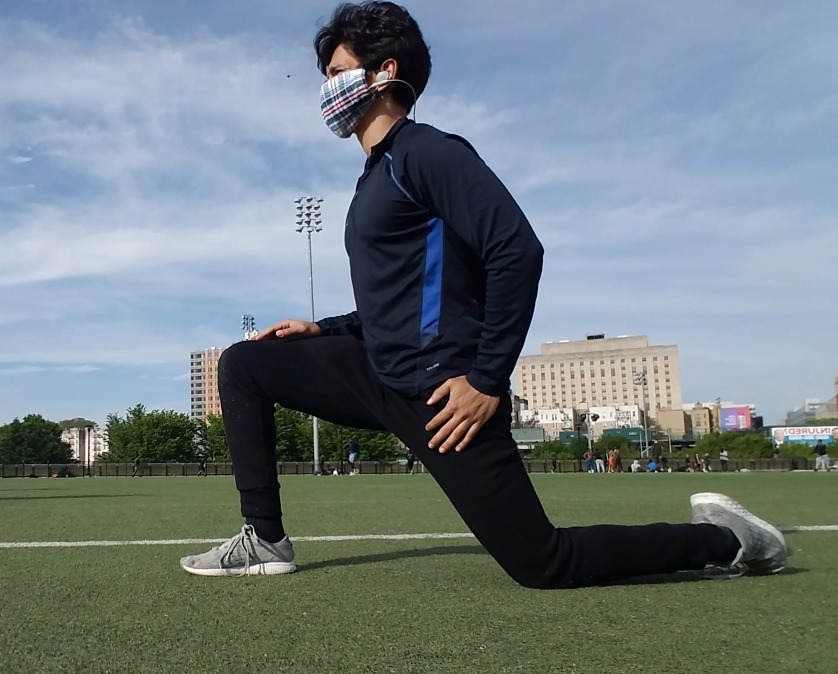n honor of National Running Day (June 3rd, 2020), I’ll outline how running has been an important form of exercise and an integral tool of activity for my personal well-being. I will also share tips on how you can get started with running and address some running misconceptions.

I never considered myself a runner. There was a good portion of my life in which I actively avoided running because I believed that running was such an intense activity. I had some misconceptions about running such as running is bad for your knees or that it can hinder your strength training gains. I had shunned the idea of running out of my mind. It was not until after a recent general check-up, I started to look into my long-term health and realized that I was still at risk of heart problems given my family history and condition, in spite of being active and fit. That realization led me to consider running as a means to improve my cardiovascular fitness.
It took some years to begin this journey but after studying the topic and discussing the sport with seasoned runners, I realized that my misconceptions were incorrect. Here are some examples you may have heard before and why they’re not accurate:
“I have bad joints so I should avoid running”:
This is a common belief as running is an impact sport and a lot of people who start off running without guidance tend to hit the ground running (literally!). An example of this is overtraining or pushing past what can handle, making it difficult for our bodies to recover. However, training as a beginner allows for important benefits that may prevent injuries. A study following Novice runners training for their first marathon suggests that running may have a proactive effect against osteoarthritis of the knee joint of sedentary asymptomatic individuals and that the marathon training did not further asymptomatic meniscal tears. (Horga et la 2019). This actually suggests that a systemized running program is helpful for joint and bone health.
“If I’m not breathless, I’m not reaping the benefits of running”:
Definitely not an accurate statement. In fact, I believe if you are huffing and puffing every time you run, you are actually not planning your runs correctly. The cardiovascular benefits of running can be seen by being at 50-70% of your heart rate max for 20-30 minutes (ACSM 2018). For most individuals without pre-existing cardiovascular conditions, that would translate into a brisk walk-jog while talking to a friend.
“Running is for the young and the fit”:
Again, not accurate. In fact, a study found that adults over the age of 65 who run at least three times a week were less likely to experience age-related physical decline in walking and balance exercises than those who didn’t. Running also has positive effects against Alzheimer’s and other diseases which cause cognitive decline, reducing the risk of obtaining the disease by 40 percent.
How to start a running:
The big question now is…How do I start running? You may think the answer is to tie up your laces and go out and run. However, if you want to prevent injuries and get the most bang for your buck as progress as a runner, I suggest following these tips:
- Have a goal: Having one will help you remain consistent with a running program. When you do find your goal, share it with close family and friends and they will keep you accountable so that you reach your goals!
- Use apps to track your progress: One favorite app recommended to beginners is the Couch-to-5K App. It tracks your progress and keeps you motivated!.
- Jog-Walk is your greatest tool: When starting off, you shouldn’t expect to run a mile consecutively and not risk overtraining. Jog-walking is a great way to slowly build endurance and reap the cardiovascular benefits of running.
- Progress miles slowly: Run-Walk for 1 mile to 1.5 miles for the first run. Do not run aggressively and aim for a 3-4 mile run your first time. You will not enjoy the post-exercise soreness and you may dislike running for a while.
- Seek guidance from a health professional and a physical therapist to make sure that you are addressing cardiovascular concerns and muscle imbalances, respectively. The more you know, the better you can avoid certain injuries and protect your overall health.
Cynergy Physical Therapy – Marathon Program
At the moment, running is an important aspect of my fitness routine, but I also needed a goal to keep me motivated. I challenged myself to train and run the NYC Marathon. To reach this goal, I needed to establish the importance of a regimented strengthening program in conjunction with an organized running program. Conversing with other runners, I found that a lot of runners didn’t have a strengthening program to address muscle imbalance, stress management and recovery. Without a strengthening program, it is much harder to prevent injuries and to perform at your best.
To address this, the Cynergy PT Team has created a program for individuals interested in a comprehensive program that addresses the following: strengthening, recovery and load management in addition to injury prevention throughout the marathon training experience, so that you may: avoid overtraining, break running PRs and reach your marathon goals. All of this under the guidance of a Board Certified Physical Therapist and Strength and Conditioning coaches.
If you are interested in this program, please contact us via email at running@cynergypt.com. Feel free to follow my running journey on Instagram @gdemera00
Happy running,
Giuseppe Demera, PT, DPT
#teamcynergy #physicaltherapy #running #runnersofinstagram #nationalrunningday #sports #sportsperformance #getmovingkeepmoving #sportsinjuryrehab #strengthandconditioning #injuryprevention #clinicalathlete #functionalmovement #nike #getpt1st #sportsrehab #physiotherapy #physicaltherapynyc #equinox #acl #aclrecovery #chooseptfirst #we💜healingourpatients #cynergyphysicaltherapy #ny
